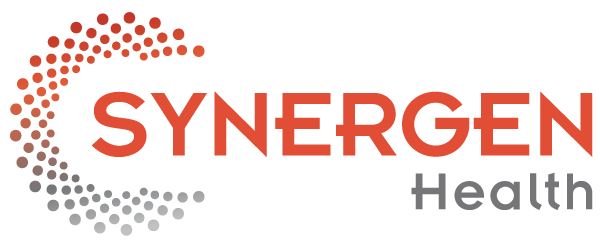Keeping a pulse on your organization’s revenue cycle and operations is crucial for sustained success and financial health.
Regularly evaluating your current revenue cycle management (RCM) processes can uncover inefficiencies, streamline operations, and ultimately enhance your bottom line.
SYNERGEN Health specializes in helping healthcare organizations achieve these goals through end-to-end RCM services. To assess an organization’s current standing and what services will benefit it, we conduct a thorough evaluation of its existing revenue cycle processes.
Our in-depth analysis covers several critical aspects of revenue cycle performance:
Accounts Receivable Summary
Days in accounts receivable (AR) measures the average number of days it takes to collect payments after a service is provided. Lower days in AR typically indicate efficient billing and collection processes, while higher days suggest potential issues.
Included in the assessment:
- Days in AR: Categorized into 0-30, 31-60, 61-90, 91-120, and 120+ days.
- Amount of money in each category: Evaluating the financial impact of outstanding payments.
- Insurance AR vs. Patient AR: Distinguishing between amounts owed by insurers and patients.
Example findings:
An analysis might reveal that a significant percentage of insurance AR exceeds 120 days—indicating issues with collection follow-ups, claims processing, or billing inefficiencies.
Similarly, a high percentage of patient AR in this category can be a red flag for problems within the billing and collections processes. Addressing these issues can involve refining claims submission processes and enhancing follow-up protocols.
Claim Submission Delays
Timely claim submissions are crucial for healthcare organizations to ensure steady cash flow, financial stability, and efficient operations. Common reasons for claim submission delays include incomplete or inaccurate patient information, coding errors, missing documentation, and complex insurance requirements.
Identifying and addressing these issues promptly can significantly enhance the organization’s revenue cycle and financial health.
Example findings:
An analysis might show that a significant portion of claims are entered into the system well after the date of service, suggesting room for improvement in billing turnaround times.
Additionally, a notable percentage of claims might be billed after 30 days, indicating inefficiencies in the current billing processes. Streamlining these processes by reducing manual steps and automating charge entry and claim submissions can lead to significant improvements.
Reimbursement Analysis by Service Type and Payer
Analyzing and understanding the reimbursement rate by service type and payer helps healthcare organizations identify inefficiencies and errors in their billing and claims processes, optimize resource allocation, and negotiate better contract terms.
For example, detecting a trend of lower reimbursements for a particular service can prompt a review of documentation practices, coding accuracy, or payer contracts, leading to improved financial outcomes and streamlined operations.
Example findings:
Significant variations in reimbursement rates across different payers may be identified, requiring detailed analysis to uncover root causes and improvement opportunities.
High percentages of fully adjusted off claims with specific payers can indicate collections and denial management issues. If a particular service consistently shows lower reimbursement rates, it may indicate coding accuracy or documentation quality issues. Or, a high rate of denied claims for certain test types suggests the need for targeted improvements in these areas.
Denial Trends
Denials can significantly hinder revenue cycle efficiency. They represent missed revenue opportunities and can create additional administrative burdens as staff must rework and resubmit claims.
Healthcare organizations need to understand the root causes of their denials to implement effective solutions. Without this understanding, efforts to reduce denials may be misdirected or ineffective. Understanding the common reasons for claim denials is crucial for any healthcare organization.
Examples of common denial causes include:
- Patient eligibility: Claims denied because the patient was not eligible for the services provided when rendered, often occurring due to outdated or incorrect insurance information.
- Bundling: Services that should be billed together are incorrectly billed separately.
- Exceeded timely filing limit: Claims submitted past the allowable time frame for filing are often automatically denied.
Comprehensive RCM Score Card
In addition to an in-depth revenue cycle analysis, you will also receive a comprehensive RCM scorecard.
This scorecard is an invaluable tool and provides a clear and concise snapshot of your current performance across key metrics. Each metric is benchmarked against SYNERGEN Health’s standards, offering a comparative view to industry best practices.
The following KPIs are included:
- Days in AR
- 90+ insurance AR %
- 90+ patient AR %
- Net collection %
- Fully written off as a % of net revenue
- DOS vs. DOE (date of service vs. date of entry)
- Fully adjusted off CPTs %
- Paid % 60+
- Top denial categories
Curious to see how your revenue cycle stacks up? Request an assessment.

